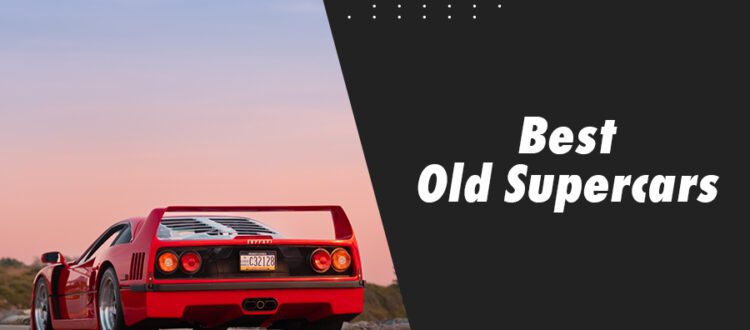Best Old Supercars
When someone asks you what your favorite rare car is, your mind likely goes to the F40 or a comparable classic from the ‘90s. But what lasting allure do these best old supercars possess that makes them as coveted today as they were in their heyday?
Below, we’ll dive deep into the supercar landscape and mention some timeless high-performance cars that defied time constraints and captivated car geeks across periods.
Top 5 Old Supercars
Let’s look at the top best old supercars that filled and exceeded our criteria, in no particular order:
Ferrari F40 (1987-1992)
Ferrari F40, produced between 1987 and 1992, was engineered by Nicola Materazzi with styling by Pininfarina. It’s known as a legendary supercar that embodies speed and performance.
Ferrari F40 is a mid-engine rear-wheel drive masterpiece packing a 2.9L twin-turbocharged V8 and channeling 471 horsepower to the rear wheels. With a top speed of 201 mph, it was the first car to break the 200 mph barrier.
Built with a focus on lightweight design, the F40 features a carbon-fiber frame, contributing to its impressive performance. The exterior design is characterized by iconic elements like pop-up headlights, a rear wing, and functional air intakes.
As a limited-production model, only 1,311 to 1,315 models were made. It had such a significant effect on gearhead culture that it’s been featured in countless movies and animations, including Gone in 60 Seconds and Top Gear.

Source: shutterstock.com / Photo Contributor: FernandoV
Lamborghini Countach (1974-1990)
Rarely do you see a car be in production for more than five to 10 years; the Lamborghini Countach is an exception to the rule. Unlike most cars with a relatively short production life, Countach’s longevity persisted for over a decade, which solidified its status as one of the most revered and iconic automobiles in history.
At the heart of the Countach was a naturally aspirated V12 engine, which got an upgrade from 3.9L to 5.2L throughout the years. This change not only showed Lamborghini’s commitment to pushing boundaries but also contributed to the Countach’s timeless appeal.
The Countach was a rear mid-engine sports car with a manual five-speed transmission and a heavy clutch producing 370 horsepower and revving up to 8,000 rpm.
The exterior featured a sharp design, scissor doors, and pop-up headlights, while the interior was lined with fine leather for utmost comfort. This mix of elegance and futurism made the Countach the most talked-about old supercar in the ‘90s.
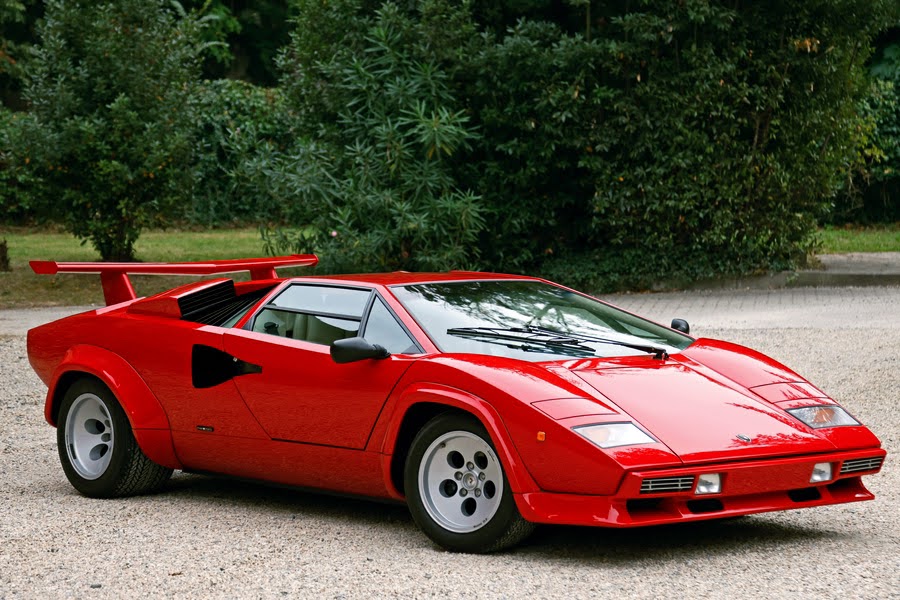
Source: shutterstock.com / Photo Contributor: GUIDO BISSATTINI
Porsche 959 (1986-1993)
Porsche 959 was a direct competitor to the Ferrari F40 and the fastest car ever built at its time of production. It was introduced in 1986 and was available until 1993.
Porsche 959 was the first of its kind to have adaptive suspension – something that is taken for granted in cars today. This system allowed the car to adjust its ride height and damping characteristics based on driving conditions, providing a balance between comfort and performance.
This model had a 2.8L flat-6 engine producing 444 horsepower and reaching speeds up to 197 mph. It also featured water-cooled heads and a sequential twin-turbocharging system. It could go from 0 to 60 mph in only 3.7 seconds.
In the span of 8 years, only 337 models of the Porsche 959 were built, adding to its desirability among supercar fans. Its advanced engine management capabilities, adaptive suspension, and appealing exterior made it an iconic old supercar that gearheads still rave about today.
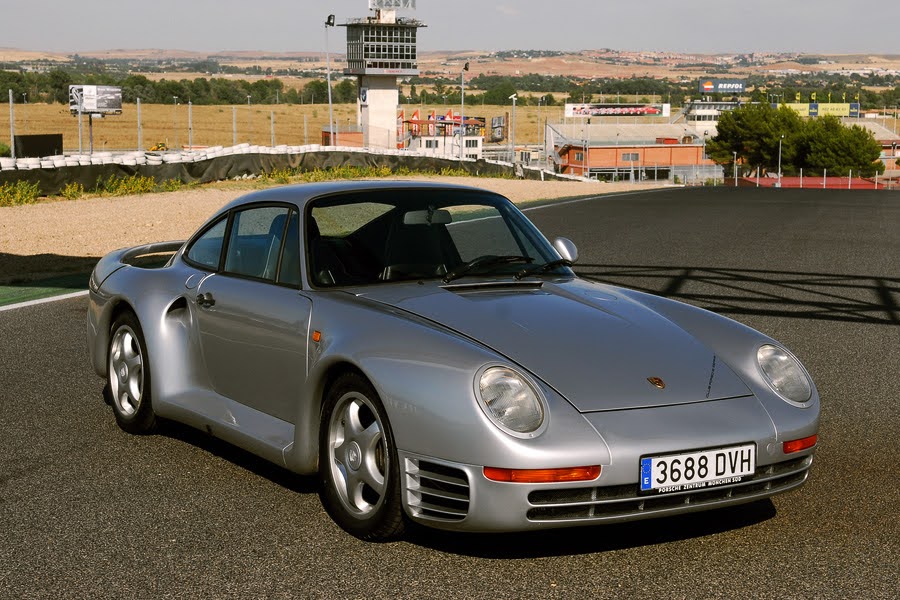
Source: shutterstock.com / Photo Contributor: FernandoV
McLaren F1 (1992-1998)
McLaren F1 has gained the moniker of “the most excellent sports car of all time” and holds the title of the fastest car with a naturally aspirated engine ever created. Looking at it, it’s not hard to understand why it’s remained the greatest old supercar for many gearheads. Its outstanding design and robust engine that propelled it to great speeds have made it a true automotive powerhouse.
The F1 featured a 6.1L V12 engine with 627 horsepower and a top speed of 240 mph. It could reach 0-60 mph in 3.2 seconds – a lot faster than many of the production cars in that period.
The F1 had a six-speed manual and three seats with a center driver position. Other notable features of the F1 include carbon fiber monocoque, gold-lined engine bay, and dihedral doors.
McLaren wanted to brand the F1 as an ultra-exclusive supercar, so only 106 units were produced in the span of 6 years. Plus, the focus was on quality versus quantity, and considering all the groundbreaking features of the F1, it’s not hard to understand why the production of a single unit was so time-consuming.
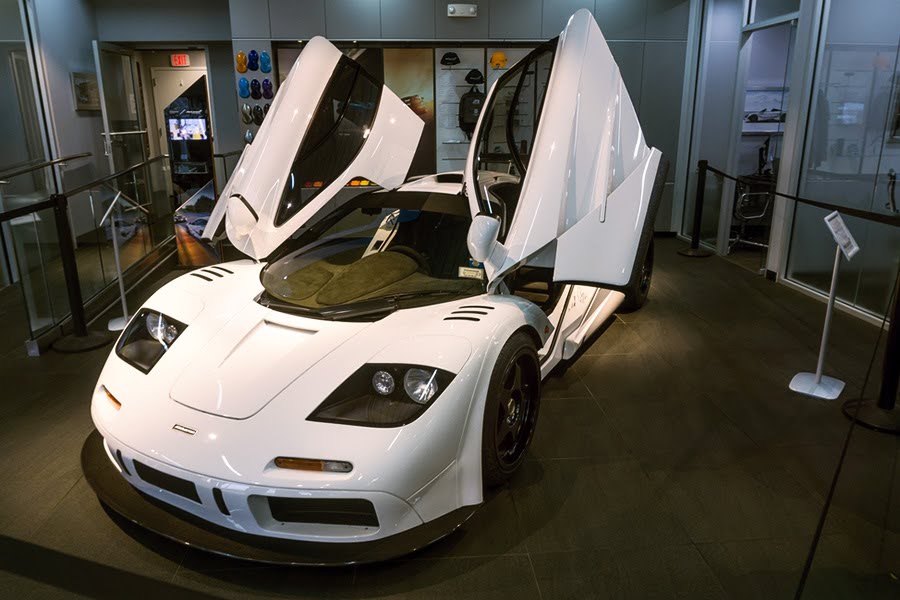
Source: shutterstock.com / Photo Contributor: Erik Cox Photography
Bugatti EB110 (1991-1995)
Bugatti EB110 is an homage to Ettore Bugatti, the founder of Automobiles E. Bugatti – one of the most renowned automotive brands known for their super-fast cars and sleek designs.
It packed a 3.5L quad-turbocharged V12 engine with 553 horsepower and a top speed of approximately 213 mph. Later, Bugatti introduced a super sport version, which boasted 603 horsepower and pushed the car past 221 mph.
The EB110 had a six-speed manual with an all-wheel drive and a carbon fiber monocoque chassis. It also featured a double-wishbone suspension system with adjustable dampers. It was designed by Marcello Gandini, and only 139 units were produced, making it a rare gem for collectors and admirers.
The EB110 marked Bugatti’s revival and set the stage for future Bugatti models.
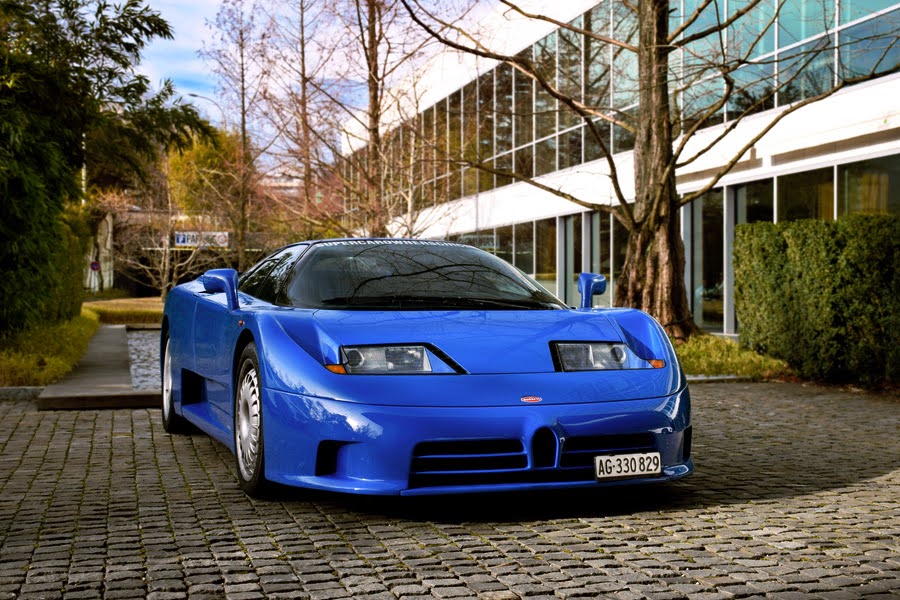
Source: shutterstock.com / Photo Contributor: dimcars
Other Honorable Mentions
Besides these iconic best classic supercars, we thought to share a few more models worthy of mention for exceeding the standards set in their era of production:
- Jaguar XJ220 – This old supercar was produced from 1992 to 1994 and had a 3.5L twin-turbocharged V6 engine with 542 horsepower and a top speed of 213 mph. It was an all-wheel drive with a five-speed manual transmission. The XJ200 was known as the fastest production car for a while, making it an iconic supercar of the ‘90s. The car design was a shared success of Jaguar and Tom Walkinshaw Racing.
- Mercedes-Benz CLK GTR – Despite only being in production for a year, the CLK GTR became a renowned name in the supercar fan club. It had a 6.9L V12 engine with a whopping 600 horsepower and a six-speed sequential manual. The design was race-inspired and based on the CLK model. It was originally created for GT1 class racing but became a road-legal car later on. Only the luckiest fans managed to snag this limited-production engine beast.
- Honda NSX – The first-gen NSX was produced from 1990-2005 and had a 3.0L V6 engine with 252-290 horsepower and 168-175 mph. It was a manual but was later on adapted as an automatic. It was meant for daily use, so it had a more toned-down design, unlike its successor.
- Ford GT90 – This is a high-performance concept car from Ford that sadly never went into production. It was made public in 1995 and featured a 6.0L quad-turbocharged V12 engine with a top speed of over 240 mph. The GT90 has a five-speed manual transmission and an overall design resembling the GT40 and modern aerodynamics. The goal of the GT90 was to showcase Ford’s design direction; you can see it for yourself at the Hajek Motorsports Museum in Ames, Oklahoma.
- Ferrari Daytona – This iconic Ferrari release was produced from 1968-1973 and boasted a 4.4L or 4.8L V12 engine, depending on the model, with 347 horsepower. It had a top speed of around 174 mph, which made it a grand tourer and contributed to the brand’s racing success.
Criteria for Selecting the Best Old Supercars
So, how did we pick our favorite vintage exotic cars from the bunch? Check out our list of criteria that helped us narrow our top five choices:
- Horsepower – The horsepower is one of the many criteria we used to make our top picks. After all, the better the horsepower, the higher the performance and potential speed of the supercar.
- The industry standards at the time – We factored in the automotive advancements and car features that gained prominence in the production era of each supercar. By doing so, we were able to pinpoint exactly what made each of the top five supercars stand out from their competition.
- Rarity – Some of the supercars we mention never exceeded the hundred-unit marks because of how expensive and time-consuming they were to produce. This drove up their value significantly and made them ultra-rare – a true collector’s gem. We can also mention the special editions of each supercar here as unique variants with added features and functionality.
- Speed – The top old supercars became popular because of their advanced speed capabilities for their time. Some of them were even considered the fastest supercars for a couple of years. We took into account their acceleration abilities, such as 0-60 mph times, as another vital criterion.
- Innovations and firsts – We picked supercars that broke industry standards and introduced novel features never seen before in classic exotic cars.
Short History of the Best Old Supercars
The history of supercars began in the ‘20s when the term was first used to describe a road-legal, high-performance sports car. However, supercars gained momentum in the ‘60s with the production of the Lamborghini Miura, making the mid-engine layout a standard feature for balance and performance. This inspired the supercars that came after it, which led to iconic releases like the Ferrari F40 and the McLaren F1.
The ‘70s witnessed the rise of the Lamborghini Countach, a successor to the Miura, which aimed to push the limits of automotive engineering. The car featured sharp angles and a futuristic design unseen until then, which inspired a whole new era for supercars.
The ‘80s were marked by the Ferrari F40 – the first-ever car to surpass the 200 mph barrier. It was personally approved by Enzo Ferrari himself, capturing his vision for the ultimate road-legal supercar. It featured a minimalist interior but a powerful engine, focusing on driver functionality.
Finally, the ‘90s were all about the McLaren F1, which was believed to have been the fastest production car for several years. It has had an ongoing influence on the automotive industry, inspiring car designers to this day.
Today, a lot of modern adaptations of these supercars are a result of nostalgia but also the desire to achieve a classic look at an enhanced performance. Prestigious automotive brands rely on the legacy of these cars to drive sales and remain relevant in the industry.
Changes in Modern Cars Inspired by the Best Old Supercars
Let’s look at some modern developments inspired by old supercars that have introduced permanent changes in modern automotive production:
- Lightweightedness – Carbon fiber only started being used in cars in the ‘60s – Formula 1 even implemented it in the structural skin of the McLaren F1, reducing its weight and boosting its strength.
- Mid-engine layout – The mid-engine configuration was pioneered by the Miura and is used in modern cars for better balance and handling.
- Central driving position – The McLaren F1 was the tri-seat supercar that inspired other automotive manufacturers to introduce the central driving position for a more focused driving experience.
- Limited editions – Remember the Super Sport version of the Bugatti? Limited editions of iconic supercars have led manufacturers of today to create exclusive automobiles to celebrate brand milestones or boost brand exclusivity.
Conclusion
The best old supercars have had a lasting impact on the modern automotive industry, with successors replicating their features and designs for a revamped but timeless look. However, nothing rouses gearheads like seeing their favorite old supercar on the street in its full glory.
Spotting your dream car in the wild and hearing it rev is every car buff’s dream. Now, imagine if you could get behind the wheel and drive your dream car.
At Fisher Luxury Rental, you can choose between different luxury cars. Check out our luxury fleet collection, and make your pick from top brands like Audi, BMW, and Lamborghini. Contact us here for any inquiries.

